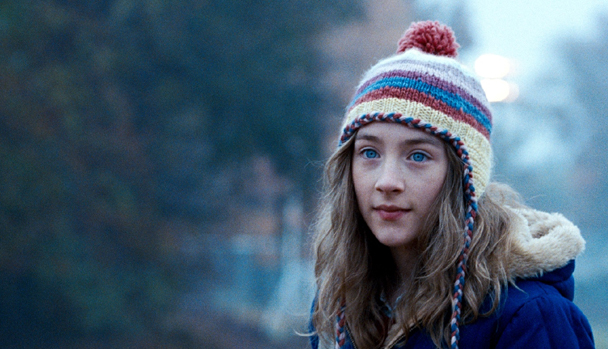The Lovely Bones
Jackson and his tag along writing team strip back the complex story of this probably unfilmable book to a core plot of whimsy and sentimentality.
Plot summary
A young girl who has been murdered and watches over her family - and her killer - from heaven. She must weigh her desire for vengeance against her desire for her family to heal.

With The Lovely Bones, Peter Jackson takes a new direction, tackling the high concept drama of this much loved novel. The story itself is standard Richard and Judy Book Club fare: Suzie Salmon is a slightly kooky girl living in 70s suburban USA, she meets a terrible end and watches from limbo as her family deal with the fallout.
The unpronounceable Saoirse Ronan, who shone as the naive villain in Atonement, is asked to perform mostly in front of a green screen and gives an excruciating first person narration. Mark Wahlberg seems to be playing Dirk Diggler, his character from Boogie Nights, who has given up his day job, married Rachel Weisz and become a father, hobbyist and accountant. Stanley Tucci‘s Mr Harvey embodies evil in the story, this creepy old man is a monster, a caricature of the peeping-tom, complete with Jonathan King’s glasses and demeanour.
Jackson and his tag along writing team strip back the complex story of this probably unfilmable book to a core plot of whimsy and sentimentality. In an adaptation such as this, you have to cut and cut ruthlessly, but this film flails at the various plot threads and catches none. Readers of the book will wonder what happened to the more interesting themes, and newcomers will be confused by the unexplored.
It is never quite decided who the main character is, so we don’t really get a protagonist. Susan Sarandon’s grandmother character seems to be starring in a parallel off-screen story- which frankly looks more fun- and appears only in misplaced scenes which are the stump of a severed plot.
With the man responsible for CG fests Lord of the Rings and King Kong in charge, you would expect some good visuals. The source material delivers the opportunity with the ‘in-between,’ the place Suzie inhabits after death, requiring bucket loads of polygons. Jackson throws up scenes which look like adverts for some petrol corp. who want to convince you that burning their particular fossil fuels will not improve British summers at the expense of, er, Bangladesh.
According to the film life after death is something like winning a gameshow: you get to explore Disney landscapes and go to a groovy disco. Whatever it is it’s all done on a green screen and doesn’t remotely feel like you’re there. Unintentionally, Jackson captures the concept of purgatory, the audience are left feeling nowhere in particular.
The world from which our protagonist is cruelly taken is a 1970s nostalgia sundae full of those wacky clothes that Mum can’t believe she once wore, but it remains more entertaining and provides more escapism than the shallow teletubbie land in-between. The real world is at times visceral, achieved mostly with interesting close up shots and some not-bad attempts at Hitchcockian set pieces.
The Lovely Bones is a lesson in the difference between cinema and literature: bookish idiosyncrasies, like Suzie’s father’s ships-in-bottles, just look twee and dull when thrown onscreen, and look simply pathetic when thrown at walls in a fit of parental catharsis. Interesting literary phrases, like the one that includes the title, are stripped of weight by Ronan’s tired sounding narrative voice directed at the reader.
The interesting concept and its potential theological implications are presented in a way which robs them of sophistication. A telltale sign of the film’s emotional immaturity is that it fails to clarify the nature of the horrific act of its premise: in the book the girl is raped, but Jackson leaves us wondering. It could be argued that the sexual nature of the attack is implied simply by the creepy ‘paedo’ persona of the attacker, but this presumes too much misanthropy on the part of the viewer. It is not enough to expect us to make the leap that creepy old man equals child abuser, despite the glasses and the sweating brow.
The plot brings in a sink hole, a muddy hole into which things disappear. I found the idea of this as a metaphor quite distracting, and it’s just one of the potentially interesting things that the film fails to elucidate. Perhaps this mysterious swallower of things, commandeered as a trash chute, could tell us more about the secrets of the society in which this story takes place. The burgeoning sense of fear in a society keen to keep its moral and physical detritus out of sight is something on which the film only touches. Perhaps it is telling that I was lost in all this unintended theorising when I was meant to be concentrating on all the on-screen pondering.











COMMENTS